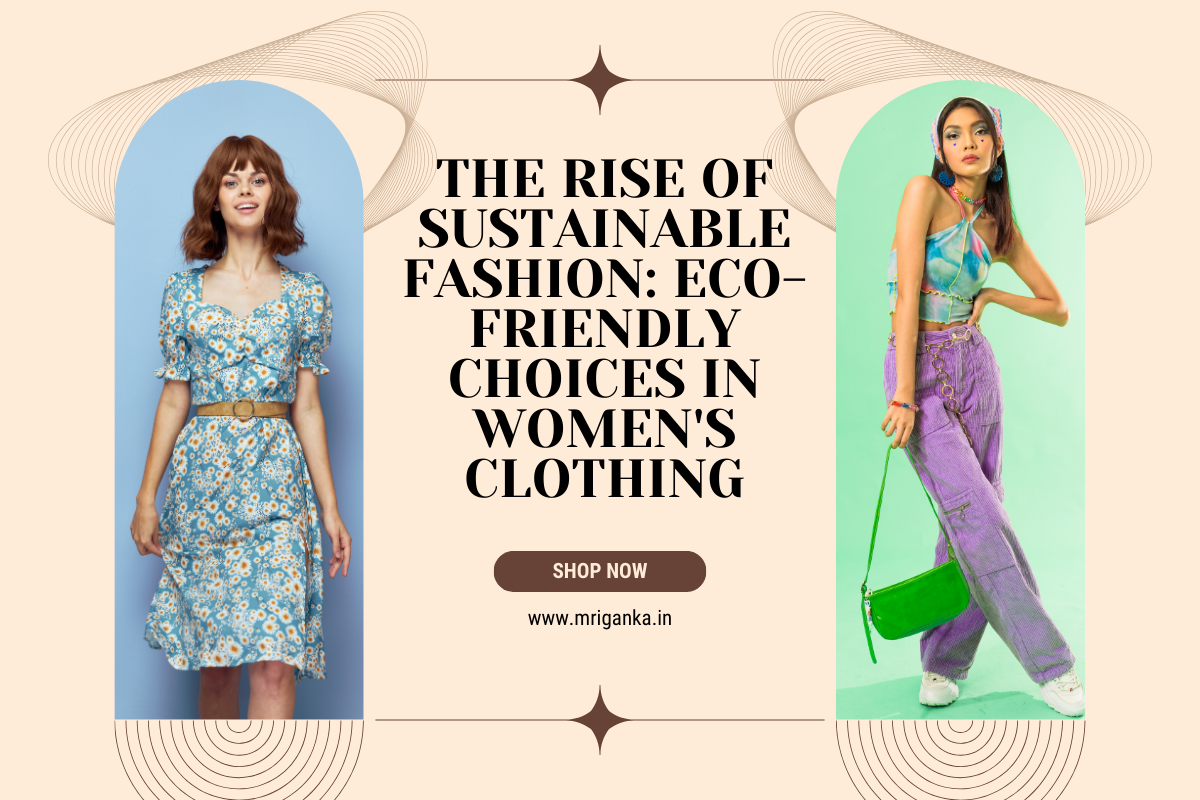In a world where environmental consciousness is no longer just a trend but a necessity, the fashion industry is undergoing a transformative shift towards sustainability. As we become more aware of the environmental impact of our choices, there's a growing demand for eco-friendly options in every aspect of our lives, including the clothes we wear. Join us as we delve into the rise of sustainable fashion and explore how eco-friendly choices in women's clothing are shaping the future of style.
1. **The Environmental Toll of Fast Fashion: A Call for Change**
Fast fashion, characterized by rapid production cycles and low-cost garments, has long been associated with environmental degradation. From water pollution to excessive waste, the traditional fashion industry has left a significant carbon footprint. The rise of sustainable fashion is, in part, a response to this environmental crisis, urging consumers and manufacturers alike to adopt more eco-friendly practices.
2. **Materials Matter: Embracing Organic and Recycled Fabrics**
One of the cornerstones of sustainable fashion lies in the choice of materials. Embracing organic fabrics such as organic cotton, hemp, and bamboo reduces the need for harmful pesticides and promotes soil health. Additionally, the use of recycled materials, whether it's recycled polyester or upcycled vintage fabrics, gives a second life to materials that would otherwise end up in landfills.
3. **Fair Labor Practices: Ethical Fashion as a Driving Force**
Sustainability isn't just about materials; it's also about the people behind the clothes. The rise of sustainable fashion emphasizes fair labor practices, ensuring that the individuals involved in the production process are treated ethically and paid a living wage. Supporting brands that prioritize fair labor conditions contributes to a more sustainable and humane fashion industry.
4. **Capsule Wardrobes and Timeless Design: Less is More**
Sustainable fashion encourages a shift away from the throwaway culture promoted by fast fashion. Capsule wardrobes, comprised of versatile and timeless pieces, are gaining popularity. By investing in high-quality, enduring designs, consumers can build a wardrobe that transcends seasonal trends, reducing the overall demand for constant production and consumption.
5. **Local Production and Small-Scale Brands: Reducing Carbon Footprints**
The sustainability movement is fostering a resurgence of local production and support for small-scale, independent brands. By choosing locally produced clothing, consumers can significantly reduce the carbon footprint associated with transportation. Additionally, supporting smaller brands often means a closer connection to the sourcing and manufacturing processes, providing transparency and accountability.
6. **Renting and Secondhand Shopping: Circular Fashion Economies**
Embracing sustainable fashion doesn't always mean buying new. Renting clothes for special occasions and shopping secondhand contribute to the circular fashion economy. Extending the lifespan of garments reduces the demand for new production and minimizes the environmental impact associated with manufacturing, transportation, and disposal.
7. **Educating Consumers: Empowering Choices Through Awareness**
The rise of sustainable fashion is, at its core, an educational journey. Empowering consumers with knowledge about the environmental and social impact of their clothing choices encourages mindful decision-making. From understanding the benefits of eco-friendly materials to recognizing certifications like Fair Trade, informed consumers play a pivotal role in driving positive change within the industry.
8. **Innovations in Sustainable Fashion Technology: Pioneering the Future**
Advancements in technology are contributing to the growth of sustainable fashion. From 3D printing of garments to innovations in dyeing processes that use less water, technology is helping to address some of the industry's most significant environmental challenges. Keeping an eye on these emerging technologies is key to understanding the evolving landscape of sustainable fashion.
The rise of sustainable fashion marks a profound and positive shift in the way we approach style and clothing. By choosing eco-friendly options, supporting ethical practices, and embracing a mindset of conscious consumption, we can contribute to a more sustainable and responsible fashion industry. As consumers, our choices have the power to shape the future of fashion—one that celebrates both style and environmental stewardship. So, let's step into a wardrobe that not only reflects our personal taste but also leaves a positive impact on the planet we call home.


